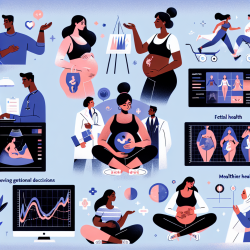Introduction
The COVID-19 pandemic has underscored the importance of gender-inclusive planning in health systems, especially during emergencies. A recent study, "Planning with a Gender Lens: A Gender Analysis of Pandemic Preparedness Plans from Eight Countries in Africa," offers valuable insights into how gender considerations can be integrated into pandemic response strategies. This blog explores how speech-language pathologists and other practitioners can apply these findings to improve outcomes for children and other vulnerable populations.
Why a Gender Lens Matters
Gender is a social construct that influences roles, responsibilities, and access to resources. During health emergencies, these factors can exacerbate existing inequalities, particularly for women and girls. The study highlights that gender-inclusive planning can help anticipate and mitigate these vulnerabilities, ensuring equitable access to health services.
Key Findings from the Study
- Gender considerations are not consistently integrated into health system planning.
- Planning with a gender lens can help anticipate and mitigate vulnerabilities in health systems.
- COVID-19 pandemic preparedness plans in Africa highlight both implicit and explicit gender considerations.
- A gender lens in emergency planning enables decision-makers to prioritize gender equity.
Implications for Practitioners
For speech-language pathologists and other practitioners, these findings emphasize the need to incorporate gender considerations into their practice. Here are some actionable steps:
- Data Collection: Collect gender-disaggregated data to better understand the specific needs of boys and girls in therapy settings.
- Community Engagement: Engage with community leaders to ensure that communication strategies are inclusive and effective for all genders.
- Training and Resources: Ensure that training programs for practitioners include gender-sensitive approaches.
- Policy Advocacy: Advocate for policies that prioritize gender equity in health and educational settings.
Encouraging Further Research
While the study provides a strong foundation, there is a need for further research to explore how gender considerations can be systematically integrated into health and educational planning. Practitioners are encouraged to contribute to this body of research by documenting their experiences and outcomes.
Conclusion
Integrating a gender lens into pandemic preparedness and response planning is not just a matter of equity; it's a necessity for effective and inclusive health systems. By applying these insights, practitioners can contribute to better outcomes for children and other vulnerable populations.
To read the original research paper, please follow this link: Planning with a gender lens: A gender analysis of pandemic preparedness plans from eight countries in Africa.










